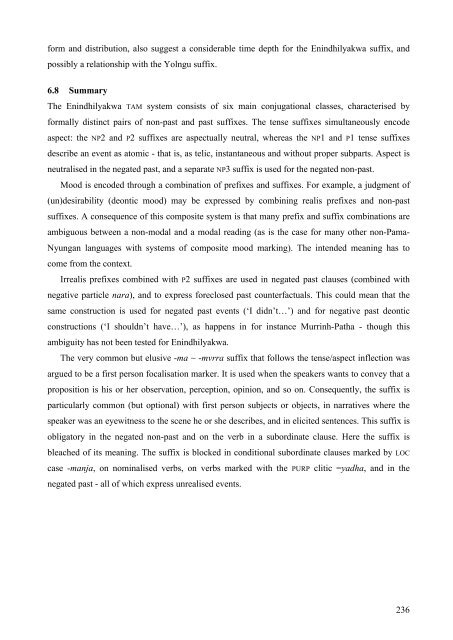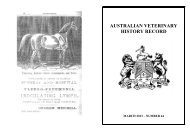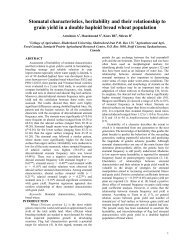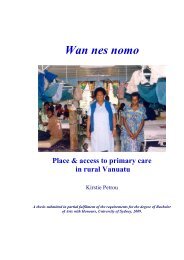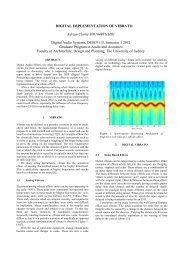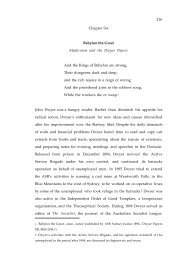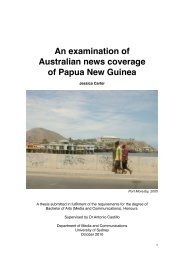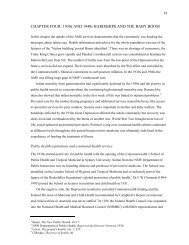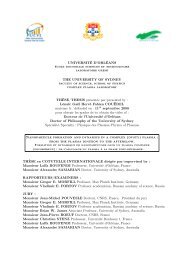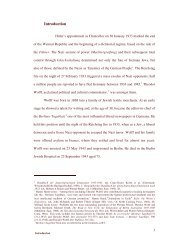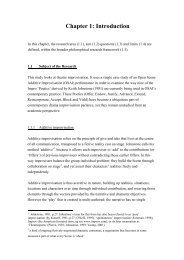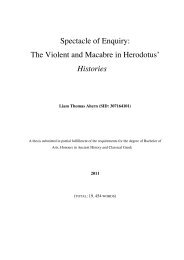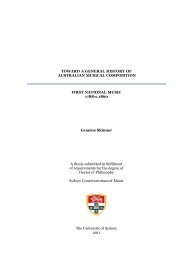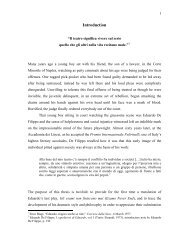Chapter 6: Tense, aspect and mood
Chapter 6: Tense, aspect and mood
Chapter 6: Tense, aspect and mood
You also want an ePaper? Increase the reach of your titles
YUMPU automatically turns print PDFs into web optimized ePapers that Google loves.
form <strong>and</strong> distribution, also suggest a considerable time depth for the Enindhilyakwa suffix, <strong>and</strong><br />
possibly a relationship with the Yolngu suffix.<br />
6.8 Summary<br />
The Enindhilyakwa TAM system consists of six main conjugational classes, characterised by<br />
formally distinct pairs of non-past <strong>and</strong> past suffixes. The tense suffixes simultaneously encode<br />
<strong>aspect</strong>: the NP2 <strong>and</strong> P2 suffixes are <strong>aspect</strong>ually neutral, whereas the NP1 <strong>and</strong> P1 tense suffixes<br />
describe an event as atomic - that is, as telic, instantaneous <strong>and</strong> without proper subparts. Aspect is<br />
neutralised in the negated past, <strong>and</strong> a separate NP3 suffix is used for the negated non-past.<br />
Mood is encoded through a combination of prefixes <strong>and</strong> suffixes. For example, a judgment of<br />
(un)desirability (deontic <strong>mood</strong>) may be expressed by combining realis prefixes <strong>and</strong> non-past<br />
suffixes. A consequence of this composite system is that many prefix <strong>and</strong> suffix combinations are<br />
ambiguous between a non-modal <strong>and</strong> a modal reading (as is the case for many other non-Pama-<br />
Nyungan languages with systems of composite <strong>mood</strong> marking). The intended meaning has to<br />
come from the context.<br />
Irrealis prefixes combined with P2 suffixes are used in negated past clauses (combined with<br />
negative particle nara), <strong>and</strong> to express foreclosed past counterfactuals. This could mean that the<br />
same construction is used for negated past events (‘I didn’t…’) <strong>and</strong> for negative past deontic<br />
constructions (‘I shouldn’t have…’), as happens in for instance Murrinh-Patha - though this<br />
ambiguity has not been tested for Enindhilyakwa.<br />
The very common but elusive -ma ~ -mvrra suffix that follows the tense/<strong>aspect</strong> inflection was<br />
argued to be a first person focalisation marker. It is used when the speakers wants to convey that a<br />
proposition is his or her observation, perception, opinion, <strong>and</strong> so on. Consequently, the suffix is<br />
particularly common (but optional) with first person subjects or objects, in narratives where the<br />
speaker was an eyewitness to the scene he or she describes, <strong>and</strong> in elicited sentences. This suffix is<br />
obligatory in the negated non-past <strong>and</strong> on the verb in a subordinate clause. Here the suffix is<br />
bleached of its meaning. The suffix is blocked in conditional subordinate clauses marked by LOC<br />
case -manja, on nominalised verbs, on verbs marked with the PURP clitic =yadha, <strong>and</strong> in the<br />
negated past - all of which express unrealised events.<br />
236


